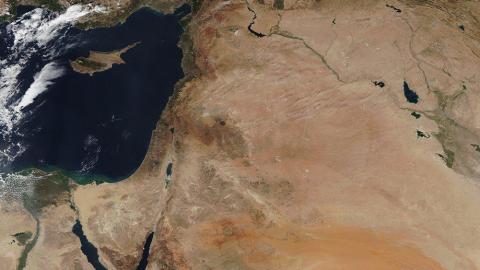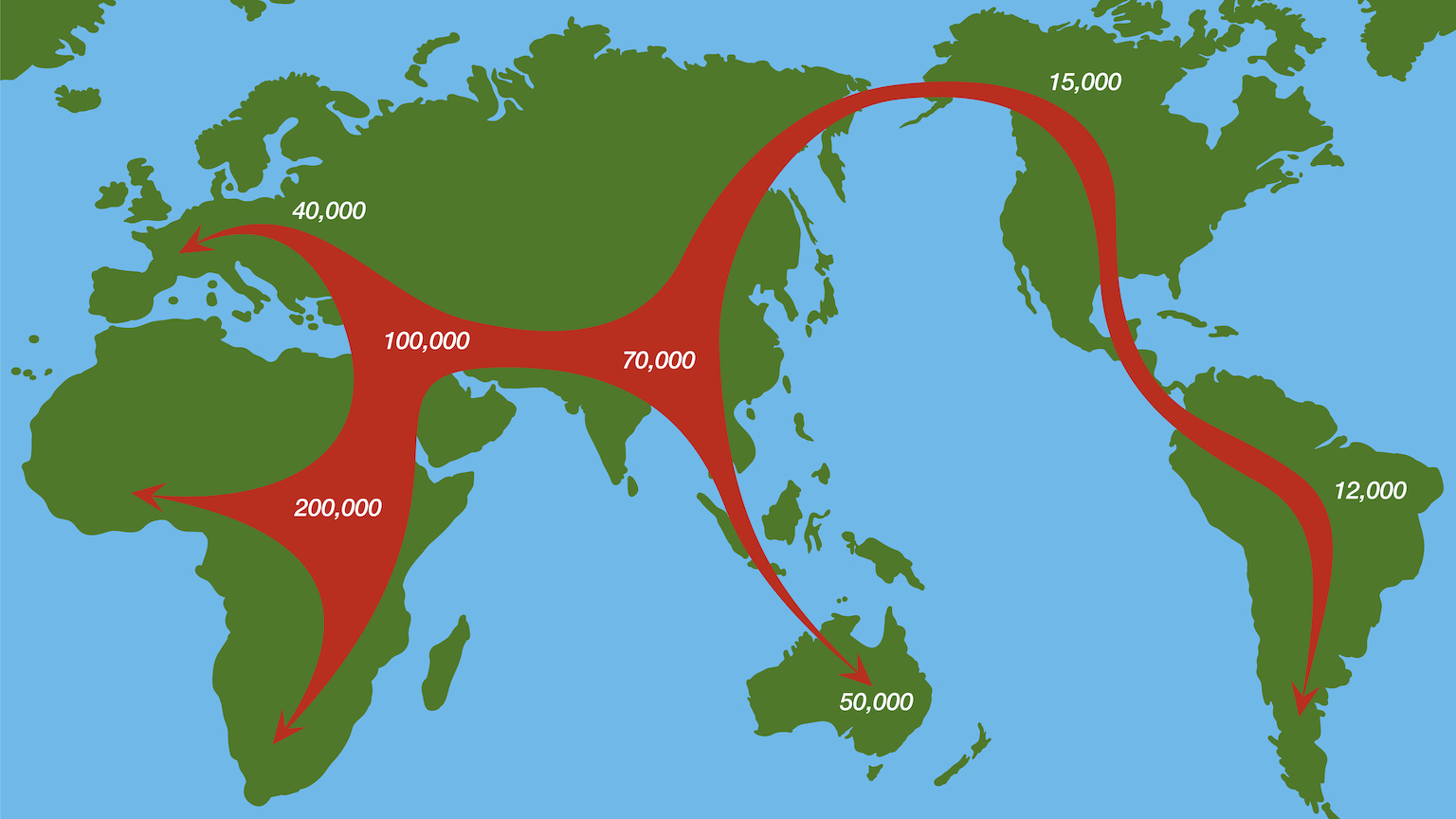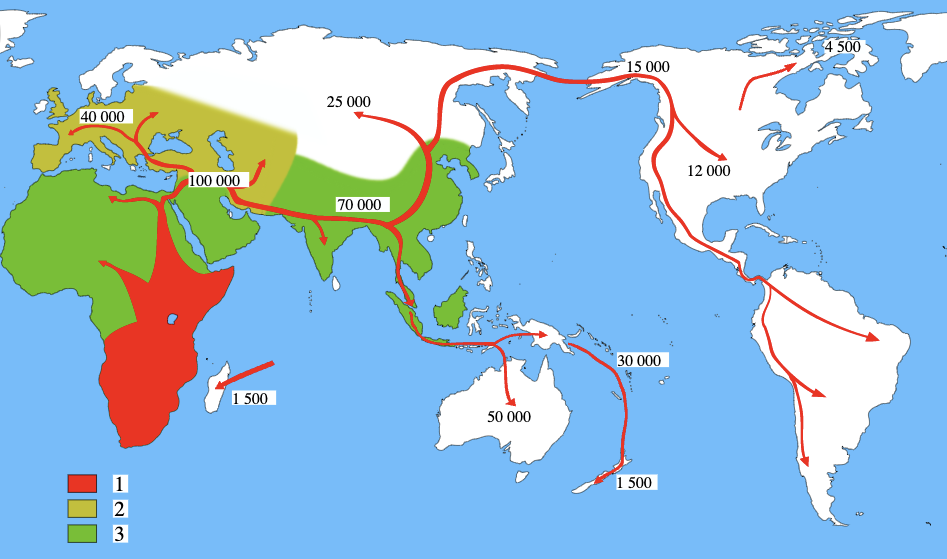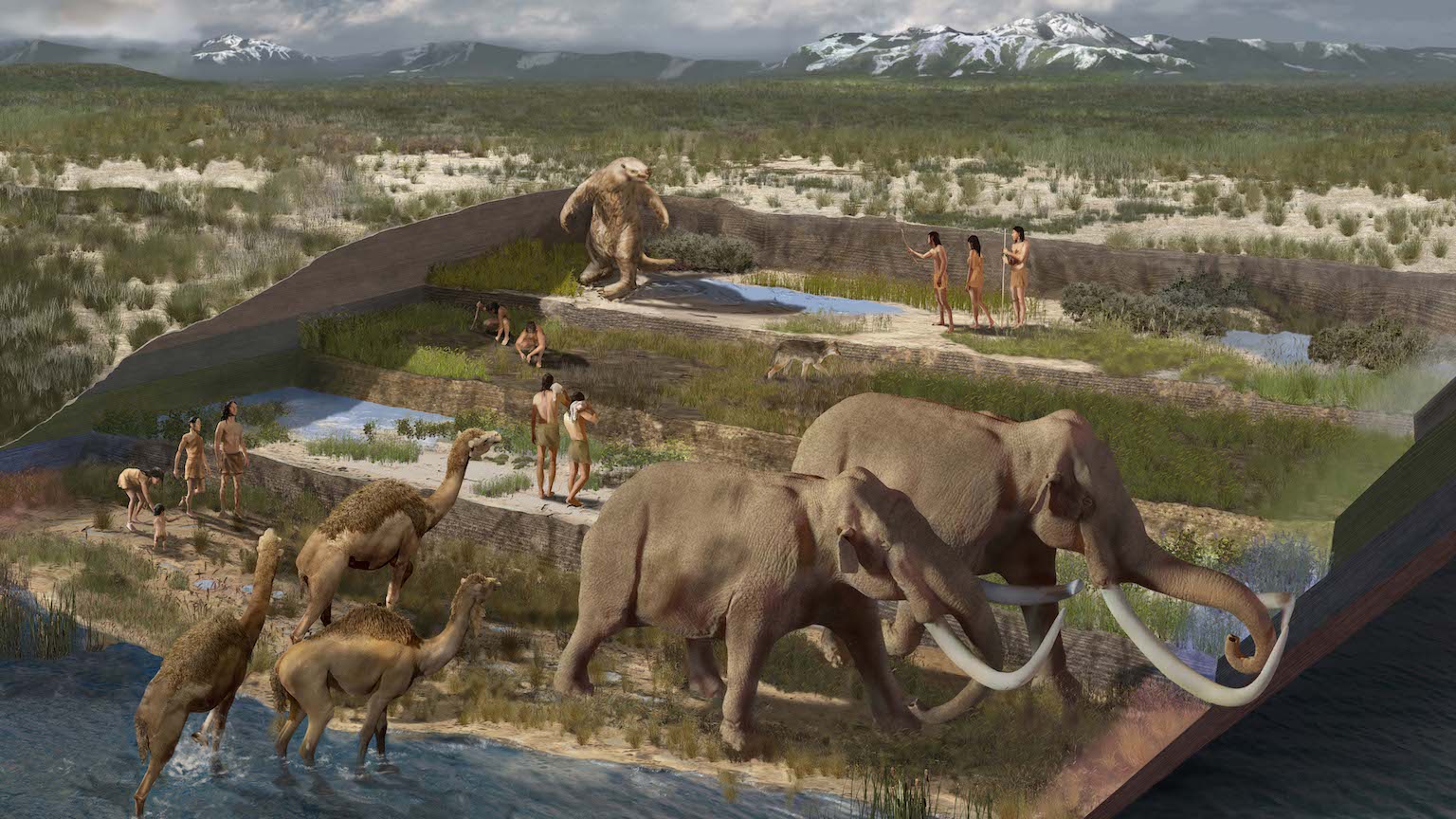- Despite being the only bridge early hominin species could have crossed to enter Eurasia, the Arabian Peninsula bears little to no evidence of early human occupation.
- Subverting expectations, a recent excavation in the Nefud Desert found tools dated to different stages of hominin evolution.
- It turns out that early humans moved in and out of the peninsula whenever the climate allowed them to do so.
We know a good deal about how early hominins — the branch of our evolutionary tree that split from chimps and bonobos up to seven million years ago — moved around their place of origin in eastern Africa. Fossils indicate they eventually made it to Eurasia through the Levant area of western Asia. This luscious green region, located on the easternmost edges of the Mediterranean, served our ancestors as the highway between two continents, one they would cross many times — in both directions.
Given how the Arabian Peninsula, a landmass that encapsulates the Levant, was our ancestors’ one and only access point to the wider world, one would think evidence of their presence would stretch from Israel to Yemen. However, this is not the case. While the Levant is littered with prodigious digging sites, the paleontological and paleoenvironmental records of the peninsula’s interior have remained hauntingly empty and fragmented.
That is, until today. According to a new paper published in Nature, excavations in the Nefud Desert in Saudi Arabia unearthed traces of both human and Neanderthal occupation. By shrinking their search window to wetter periods on the geologic time scale — what the authors refer to as “brief ‘green’ windows of reduced aridity approximately 400, 300, 200, 130-75 and 55 thousand years ago” — archaeologists were able to find a number of Low to Middle Pleistocene Age tools used by proto-humans that ventured into the region after heavy rainfall transformed the desert into a wide-open grassland.
Digging in the desert
To say the interior parts of the Arabian Peninsula have never yielded evidence of hominins would not be entirely true. The earth here hides evidence of hominins, just not of hominin settlements. Whenever archaeologists make a discovery, it is usually the remnants of a makeshift workshop site, which are very different from the cave and rock shelters that can be stumbled upon throughout the more hospitable Levant region. Did we look hard enough, though?
Excavations in northern Saudi Arabia at a site called Khall Amayshan 4 (KAM 4) suggest we did not. On the surface, the site looks like any other part of the Nefud Desert. Below ground, however, sedimentary rocks and interdunal basins tell of a time when this place used to contain a network of lakes and rivers. Such a clear and detailed preservation of this time in geologic history cannot be found anywhere else on the peninsula and was formed serendipitously when a sand dune slid atop the basin to protect it from erosion.
We know the shores at KAM 4 have been occupied by hominins several times during the Pleistocene because different phases of lake formation correspond with a “distinct lithic assemblage” — an archaeological term for stone tools and their byproducts, of which KAM 4 is filled to the brim. A 400,000-year-old assemblage contains small hand axes made from slabs of quartzite, while a 55,000-year-old deposit contains a number of Levallois flakes.
These tools can teach us several things about the hominins that made and used them. In terms of appearance and design, some assemblages at KAM 4 seem to have more in common with those found in Africa than those from the Levantine woodlands, suggesting a different migration out of Africa might have taken place — one that ended up in Arabia rather than Eurasia. “It seems,” the researchers write, “that much of Northeast Africa and Southwest Asia shared similar material culture.”
Climate change and migratory patterns
Hominin species did not hop continents at random; their migratory patterns were a response to the changing climate of the Pleistocene. Judging from the results of their excavation at KAM 4, researchers identified no less than five distinct movements into the Arabian Peninsula. Given that most of the tools were dated to periods that saw increased rainfall, it is safe to say our ancestors only migrated into the desert when it became hospitable enough for them to do so.
Conversely, researchers were unable to find any tools that would have been left during interglacial periods. It seems that, as the region became warmer and more arid, the hominin populations that had made their home inside the peninsula dispersed once again. The unstable environmental conditions that plagued the peninsula may well explain the fragmentation of its fossil evidence, a problem that researchers in the relatively static Levantine woodlands rarely encounter.
Because climate change and the accompanying mass migratory movements can actually erase the vast majority of a species’ fossil record, these findings bear relevance to modern readers. This year’s UN climate report warns of Arctic summers without ice and tropical storms that will become even more ubiquitous than they already are. What if hundreds of thousands of people have to leave their homes either temporarily or indefinitely?






